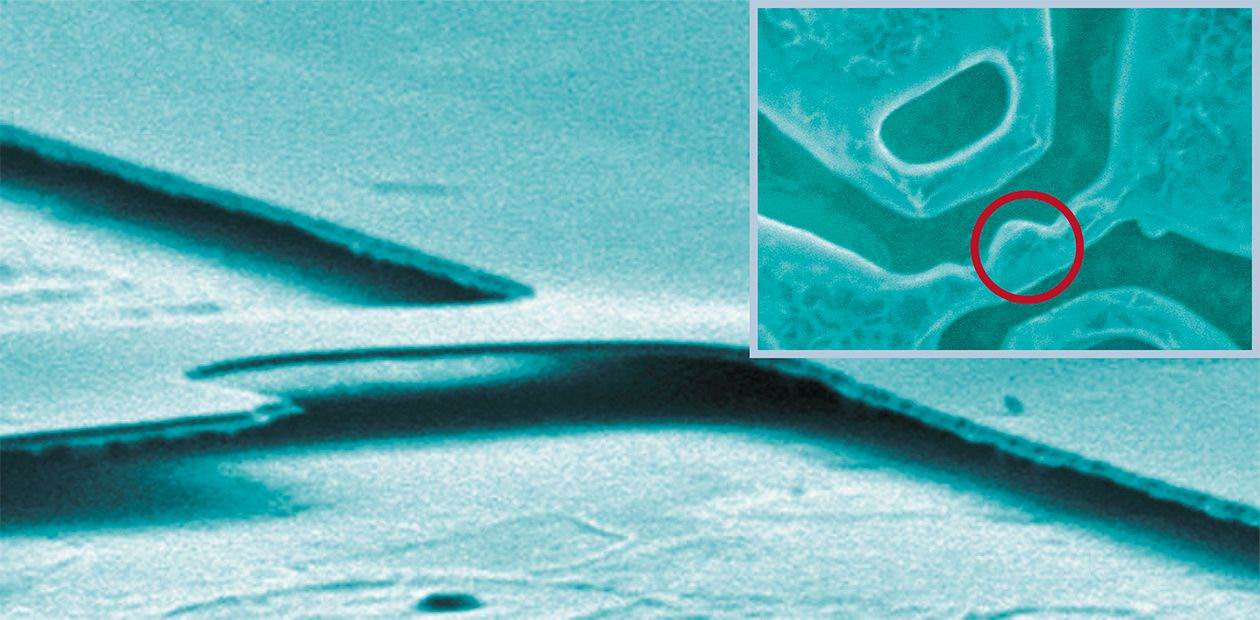Nano-Electronics: Global Warming is Expected
The first place at the International Competition of Young Researchers' Achievements (Nano-electronics section), which was held as a part of the Moscow forum "Rosnanotekh 2008", was given to the 5th year student of the physics department of Novosibirsk State University Andrey Shevyrin
The presentation of 21-year-old Andrey Shevyrin dedicated to the fabricating of the single-electron transistor working at the temperatures close to room temperature turned out to be the best among presentations of many other researchers and post-graduates at the Nano-electronics section.
In the common field-effect transistors widely used in electronics the switching from the open state to the close state is accompanied by a transfer of hundreds of electrons, which takes great energy. And since the number of such transistors in modern integral chips is enormous, the problem of reducing the energy expenditure becomes quite pressing.
In standard single-electron transistors it is enough to transfer a single electron on the quantum dot to switch (hence the name), so the prospects of their use are tempting. However, there is one “but”: generally, such a transistor can only work at very low temperatures (lower than the temperature of liquid helium 4.2 K).
The maximum working temperature of the transistor is in inverse proportion to the quantum dot capacity, which depends on its size: the smaller the dot, the higher the maximum working temperature. To make the transistor work at room temperature (300 K), the size of the quantum dot should be within 10 nm. It is possible to make an electron conductor of this size with the help of modern technologies, but it is next to impossible to provide a branched geometry of the transistor: it should be supplied with an appropriate number of gates that rule the quantum dot potential and tunnel barriers transparency.
“We paid attention to the fact that the capacity of the quantum dot is determined not only by its size but also by permittivity of the surrounding material,”—explains Andrey’s research supervisor, Doctor of Physics Arthur Pogosov from the Laboratory of Nonequilibrium Semiconductor Systems of the Institute of Semiconductor Physics SB RAS.—“So if we separate the transistor from its high-permittivity substrate, we can increase its size to 100 nm instead of 10 nm.”
“We discovered it almost by accident, when studying an absolutely different phenomenon in the experiments we conducted with the senior researcher of our Institute Maksim Budantsev”,—adds Andrey.—“Later, when analyzing the results of the experiment, we were surprised that nobody had prognosticated this seemingly evident fact. It does not happen rarely, though: first, an effect is discovered experimentally and later it is confirmed by calculations. Simultaneously with us, similar experiments were being carried out by a group of German researchers led by Professor Kotthaus, but the idea of increasing the transistor working temperature by separating it from the substrate did not occur to them.”
As for today, the highest working temperature of the “suspended” transistor the physicists managed to reach is 150 K with a 200 nm quantum dot. They are planning to separate the quantum dot (to extend the gap) from the substrate so that the transistor works at room temperature. This stage requires an engineering decision optimized with respect to temperature, size of the quantum dot, and the size of the gap between the dot and the substrate. In case of success this step should bring the technology much closer to its practical application.
Andrey and his research supervisor are interested in other effects as well –those which can be demonstrated by the nano-transistor “freed” from the substrate, in particular, its mechanical vibration. This vibrating transistor can be used as a basis for precision current sources. Studies of such movable electric nano-systems are only just beginning.





